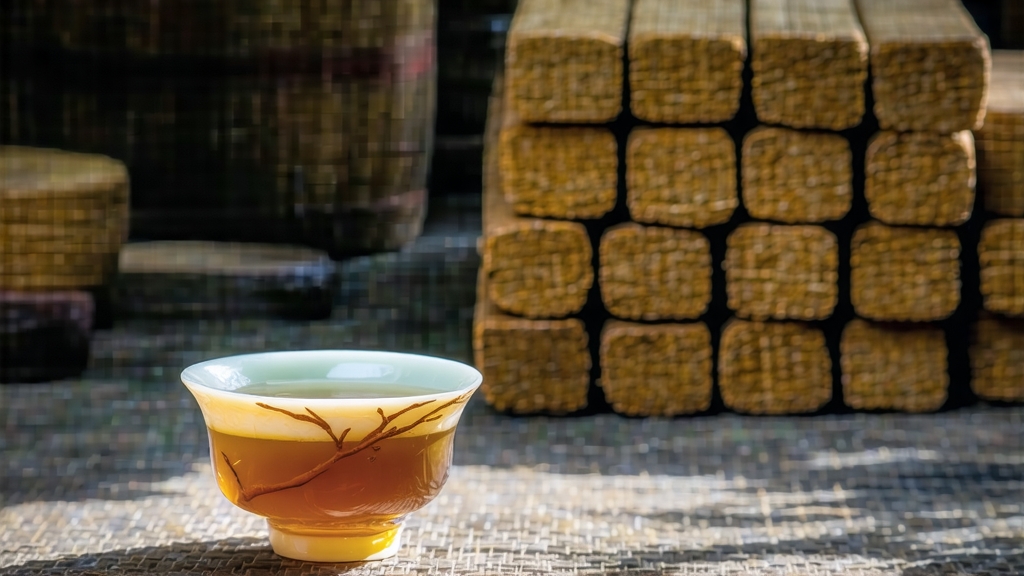
Tucked away in the humid, karst-pocked mountains of southern Guangxi, Liu Bao tea has spent four centuries quietly fermenting while its more famous cousins—Pu-erh, Fu brick, and Qianliang—grabbed the international spotlight. Yet for those who venture beyond the tourist menus of China’s tea belts, Liu Bao offers a passport to a flavor universe where camphor, betel nut, and forest-floor umami converge in a silky, garnet-black liquor. This article invites the global tea traveler to discover why Liu Bao is now the most sought-after dark tea among Chinese sommeliers, how its dual fermentation process creates a living antique, and the simple rituals that coax its buried stories into every cup.
-
From Border Trade to Imperial Tribute
The saga begins during the Ming-Qing transition, when war refugees from Jiangxi Province crossed the Meiling Pass into Guangxi and discovered that the indigenous Yao and Zhuang peoples were already sun-drying wild tea on bamboo mats. Mule caravans carried the rough leaf down the Liu Bao River to the port of Wuzhou, where it was compressed into 40-kilogram baskets, loaded onto bamboo rafts, and floated to Guangzhou and Hong Kong. There, dockworkers noticed that the steamy hold of junks darkened the leaf and softened its harsh edges. By the Qianlong era (1736–1795), Liu Bao had become a medicinal staple on ships bound for Southeast Asia; dockside pharmacies prescribed it for dysentery, humidity-induced rheumatism, and the dreaded “sailor’s phlegm.” In 1802 the governor of Guangxi elevated Liu Bao to imperial-tribute status, sending the first “Song Pin” (Tribute Grade) baskets to Beijing’s Forbidden City, where eunuchs aged it alongside pu-erh in the underground storerooms of the Imperial Tea Bureau. -
One Leaf, Four Faces: Grades and Styles
Today Liu Bao is classified by picking standard and basket size rather than mountain village. The top grade, “Special Song,” consists of one bud and two leaves plucked before Qingming from the 200-to-400-year-old “Lao Cong” (old bush) groves around Liubao town. Below it come Grade 1 to Grade 4, each step allowing more mature leaves and longer stems. After fermentation the leaf is packed into four traditional containers:- Bamboo Basket (Lü): 40–50 kg, lined with banana leaf, the classic export form.
- Wooden Crate (Xiang): 30 kg, used for humid Singapore warehouses that accelerate aging.
- Paper-wrapped Brick (Zhuan): 250 g to 1 kg, favored by Hong Kong tea investors.
- Loose Leaf (San): vacuum-packed for modern cafés, yet still retaining the signature betel-nut note.
-
The Double Dance of Heat and Microbes
Unlike pu-erh’s piling or Fu brick’s “golden flower” mold, Liu Bao undergoes a two-stage fermentation that begins with “wo dui” (moist piling) for 10–14 days at 55 °C and 85 % humidity, followed by a slow “cang wei” (warehouse flavor) maturation that can last from 3 to 50 years. Master craftsmen—almost always women—first sun-wilt the leaf on bamboo screens, then fire it in dragon-bone charcoal ovens at 280 °C for eight minutes to kill green enzymes. While still warm, the leaf is sprayed with mountain spring water inoculated with a mother culture taken from 30-year-old baskets. The pile is covered with jute sacks and left to breathe; every 24 hours it is turned by barefoot “tea dancers” who feel for the ideal 55 °C hotspot that signals the bloom of Aspergillus niger, Bacillus subtilis, and the rare Guangxi yeast Wickerhamomyces anomalus. Once the leaf turns chestnut-brown and emits a sweet betel-nut scent, it is steamed, packed into baskets, and transferred to the “cave warehouses”—abandoned limestone tunnels that stay at 22 °C and 90 % humidity year-round. Here the second fermentation begins: slow oxidation catalyzed by ambient molds, bamboo volatiles, and the occasional gecko dropping, a terroir impossible to replicate outside Guangxi. -
Aroma Lexicon: How to Read Liu Bao’s Memory
Professional cupping breaks Liu Bao into